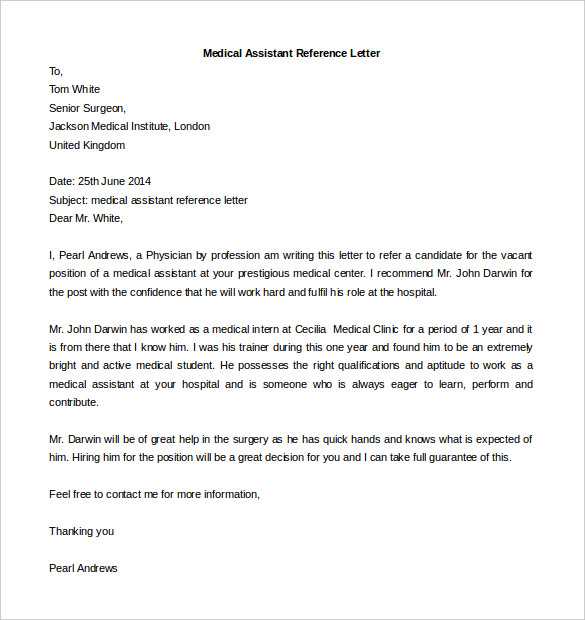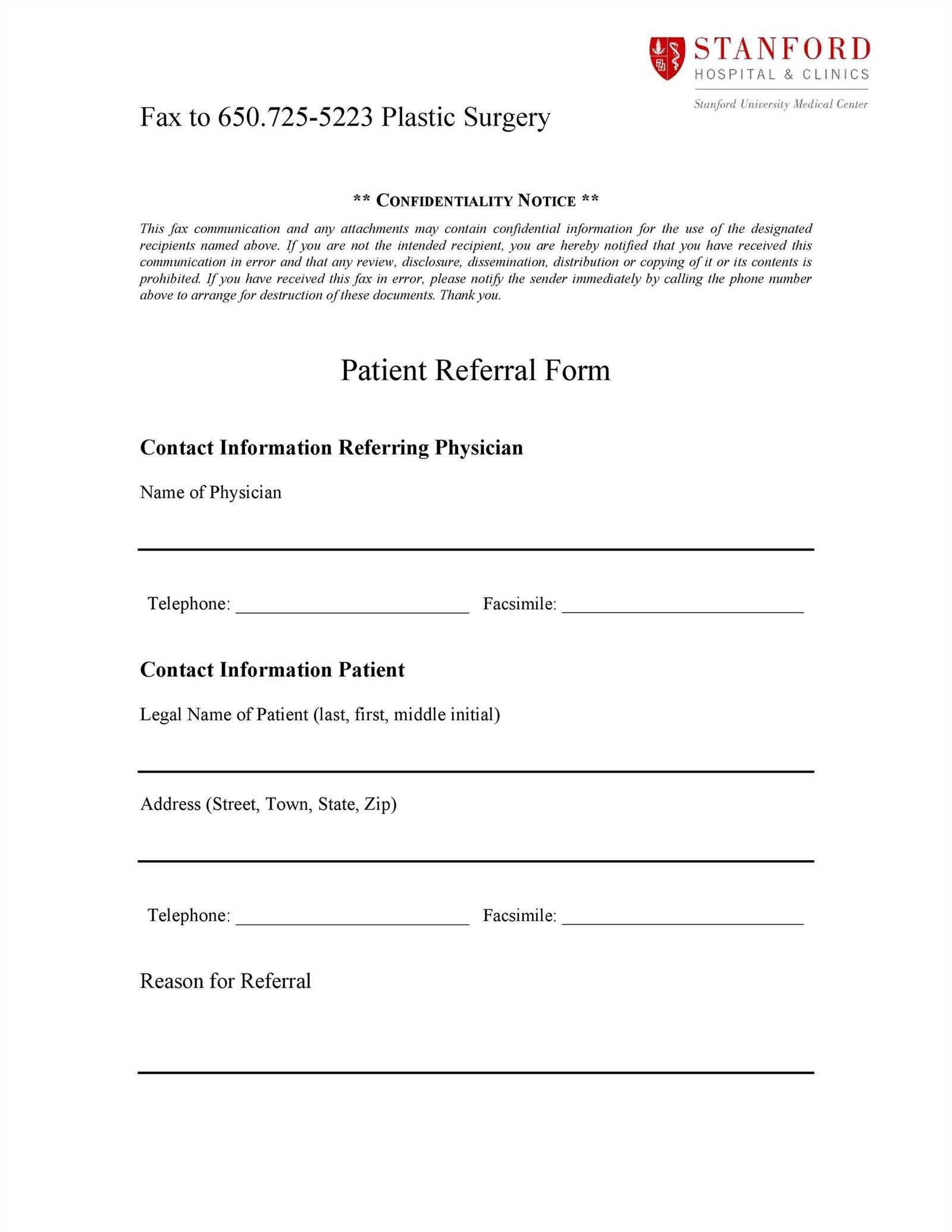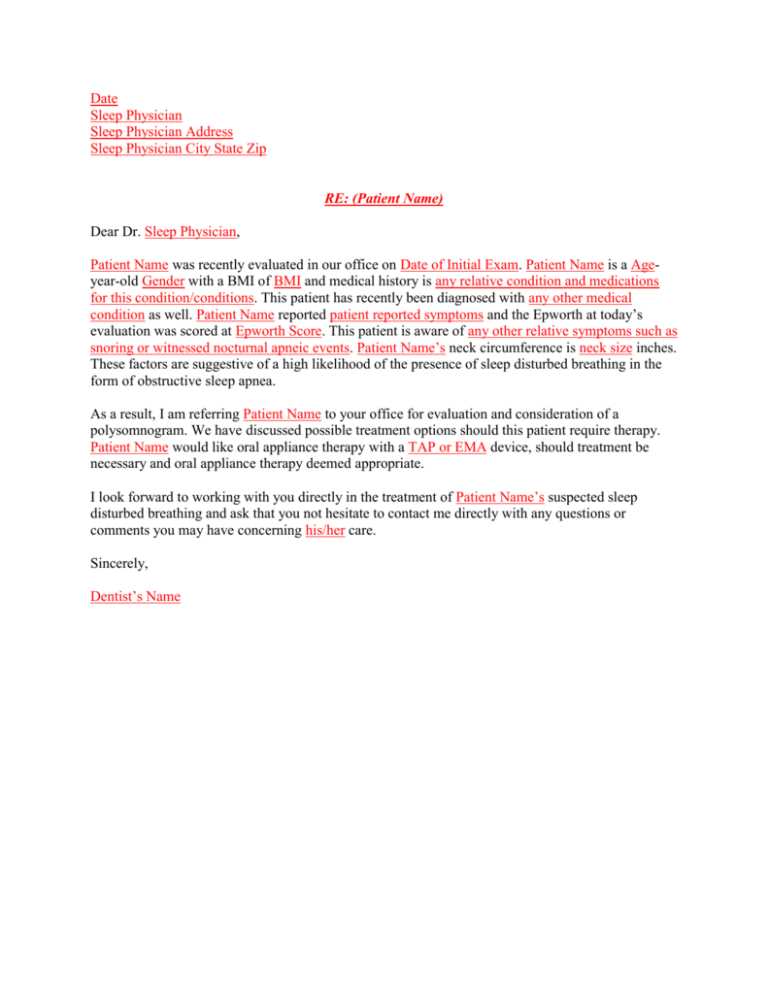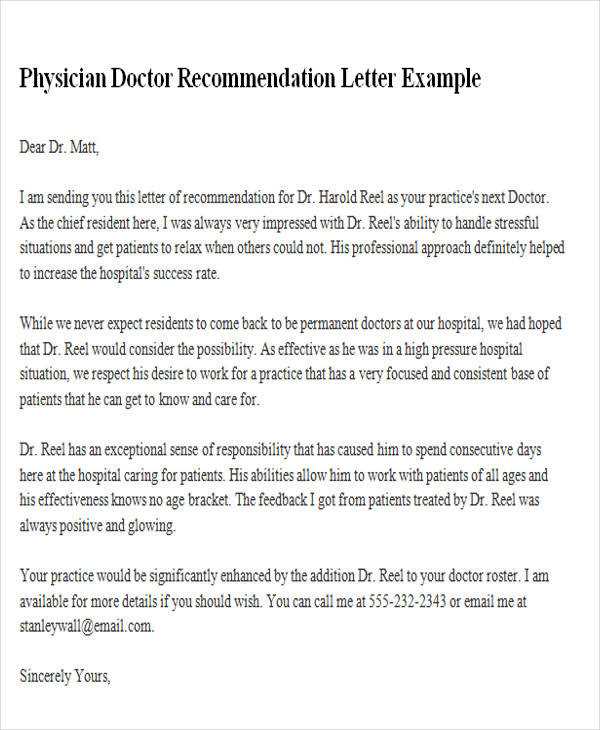Referral Letter Template for Doctors and Healthcare Professionals

When healthcare professionals need to communicate about a patient’s condition or treatment, a structured form of written communication becomes essential. This practice ensures that both parties have a clear understanding of the patient’s medical needs and helps in delivering the appropriate care. Having a standardized approach simplifies this process and enhances efficiency.
Key Elements to Include

Every formal communication between healthcare providers should be comprehensive and clear. Some essential aspects to include are:
- Patient Information: Basic details such as name, age, and medical history.
- Reason for Communication: A brief description of why the message is being sent.
- Medical Background: Relevant diagnosis, treatments, and any ongoing care plans.
- Specific Requests: What is expected from the receiving healthcare professional, whether it’s a consultation or further treatment.
- Contact Information: To ensure prompt follow-up and communication.
Best Practices for Clarity and Precision
Clear, concise, and precise language is essential. Avoid unnecessary jargon and keep the communication to the point. Here are some tips to improve clarity:
- Use straightforward and simple language.
- Stay focused on the purpose of the message.
- Make sure to organize the information logically for easy understanding.
- Double-check patient information and medical details for accuracy.
Common Pitfalls to Avoid
Even the most experienced professionals can make mistakes when drafting official communications. Some frequent errors include:
- Omitting critical details that may result in confusion or delays in treatment.
- Using unclear language that could lead to misinterpretation of the patient’s condition or needs.
- Failing to update contact information, making follow-up difficult.
By following these guidelines and avoiding common mistakes, healthcare professionals can create effective messages that ensure continuity and clarity in patient care.
Understanding the Role of Referral Notes

In healthcare, written communication between professionals plays a crucial role in ensuring that patients receive the right care at the right time. These documents serve as a formal request for further evaluation or treatment, providing essential medical information to the receiving practitioner. By following specific guidelines, these communications facilitate a smooth transfer of care and help avoid errors that could impact patient outcomes.
Key Elements of a Referral Document
For effective communication, a formal document should contain several key details to ensure clarity and completeness. These include:
- Patient Information: Basic demographic data and medical history to provide context.
- Reason for Transfer: A clear explanation of why the patient is being sent for further evaluation or care.
- Medical History: Important past medical events, current diagnoses, and any ongoing treatments or medications.
- Requested Actions: Specific tasks or assessments that the receiving professional needs to perform.
- Contact Details: To ensure swift follow-up and communication between practitioners.
How to Design a Referral Letter Template
Creating a useful document requires structuring the content in a standardized yet customizable format. The design should prioritize simplicity, focusing on providing essential information in an organized manner. The use of headings, bullet points, and concise paragraphs can make the document easier to follow and ensure that the recipient can quickly locate the relevant details. Including space for additional notes or instructions is also advisable, as it allows healthcare providers to add any extra pertinent information.
Advice for Clear and Concise Referrals

Clear communication is essential in healthcare, and it’s important to avoid ambiguity in these documents. To achieve this, keep the language straightforward and free from unnecessary medical jargon. Focus on presenting only relevant information that directly impacts the patient’s care. Additionally, ensure the document is well-organized, with a logical flow that makes it easy for the recipient to digest the information without confusion.
When to Use a Patient Referral
Such documents are typically used when a healthcare provider requires additional expertise, whether for a second opinion, specialized treatment, or further diagnostic testing. They are also necessary when a patient’s condition falls outside of a provider’s scope of practice or when continuity of care is needed across different stages of treatment. Recognizing the right time to use these documents helps to ensure that patients receive timely and appropriate care.
Common Issues in Writing Referral Letters
Despite their importance, errors in drafting these communications are common. These include missing crucial patient information, using unclear or ambiguous language, and failing to specify the purpose of the transfer. Such mistakes can lead to delays in treatment, misinterpretation of patient needs, and even unnecessary procedures. To avoid these pitfalls, it is essential to review the document for completeness, clarity, and accuracy before sending it to the receiving professional.